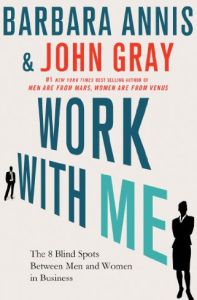
Work with Me
The 8 Blind Spots between Men and Women in Business
Recommendation
John Gray, author of Men Are from Mars, Women Are from Venus, and Barbara Annis, an expert on gender inclusiveness, discuss “gender blind spots” that generate friction between men and women at work. The authors distributed 100,000 surveys to employees in 60 Fortune 500 companies. They found that women are not as satisfied with their professional lives as men. Women feel excluded from advancement, undervalued and unappreciated. Men say women ask too many questions, take criticism personally and become emotional. The authors advise companies to cultivate “gender intelligence” so men and women can accept and acknowledge their differences as strengths. Even though some of Gray’s and Annis’s advice is obvious common sense, getAbstract recommends these findings to executives seeking an inclusive workplace and to HR professionals who struggle to retain talented employees, especially women.
Summary
About the Authors
Barbara Annis works as a consultant to Fortune 500 companies specializing in Gender Intelligence. Therapist John Gray wrote Men Are from Mars, Women Are from Venus.












Comment on this summary